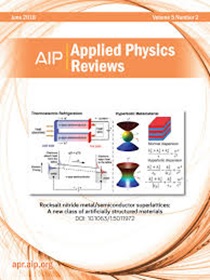脂质纳米颗粒辅助mRNA治疗癌症
IF 11.6
1区 物理与天体物理
Q1 PHYSICS, APPLIED
引用次数: 0
摘要
在COVID-19 mRNA疫苗成功后,mRNA技术和脂质纳米颗粒(LNP)平台在其他治疗应用,特别是癌症治疗方面获得了重要的研究关注。mRNA的灵活性、可扩展性和安全性使其适合于制药应用,mRNA工程的最新进展进一步提高了其稳定性和翻译耐久性。LNP平台通过实现细胞内传递和支持肝脏和肝外器官的通路,在mRNA治疗的临床翻译中发挥了重要作用。然而,肿瘤特异性LNPs的缺乏阻碍了基于mrna的癌症治疗的成功发展。在这篇综述中,我们讨论了mRNA的基本生物学和mRNA治疗癌症的益处。我们强调LNP平台如何工作及其在基于mrna的癌症治疗中的重要作用。我们还研究了改善LNPs用于癌症治疗的物理化学性质的方法。本文综述了mRNA-LNP技术在肿瘤治疗中的临床研究现状。最后,我们讨论了开发能够有效递送mRNA用于癌症治疗的LNPs的挑战和未来前景。本文章由计算机程序翻译,如有差异,请以英文原文为准。
Lipid nanoparticle-assisted mRNA therapy for cancer treatment
mRNA technology and the lipid nanoparticle (LNP) platform have gained significant research attention for other therapeutic applications, particularly cancer treatment, after the success of COVID-19 mRNA vaccines. The flexibility, scalability, and safety of mRNA render it suitable for pharmaceutical applications, and recent advances in mRNA engineering have further improved both its stability and translational durability. The LNP platform has been instrumental in the clinical translation of mRNA therapy by enabling intracellular delivery and supporting access to both hepatic and extrahepatic organs. However, the lack of tumor-specific LNPs hinders the successful development of mRNA-based cancer therapy. In this review, we discussed the basic biology of mRNA and the benefits of mRNA therapy for cancer treatment. We highlighted how the LNP platform works and its important role in mRNA-based cancer therapy. We also looked into ways to improve the physicochemical properties of LNPs for cancer treatment. Clinical trials are reviewed to provide the current status of mRNA-LNP technology in cancer therapy. We conclude with a discussion of the challenges and future prospects for developing LNPs capable of mRNA delivery effectively for cancer treatment.
求助全文
通过发布文献求助,成功后即可免费获取论文全文。
去求助
来源期刊

Applied physics reviews
PHYSICS, APPLIED-
CiteScore
22.50
自引率
2.00%
发文量
113
审稿时长
2 months
期刊介绍:
Applied Physics Reviews (APR) is a journal featuring articles on critical topics in experimental or theoretical research in applied physics and applications of physics to other scientific and engineering branches. The publication includes two main types of articles:
Original Research: These articles report on high-quality, novel research studies that are of significant interest to the applied physics community.
Reviews: Review articles in APR can either be authoritative and comprehensive assessments of established areas of applied physics or short, timely reviews of recent advances in established fields or emerging areas of applied physics.
 求助内容:
求助内容: 应助结果提醒方式:
应助结果提醒方式:


